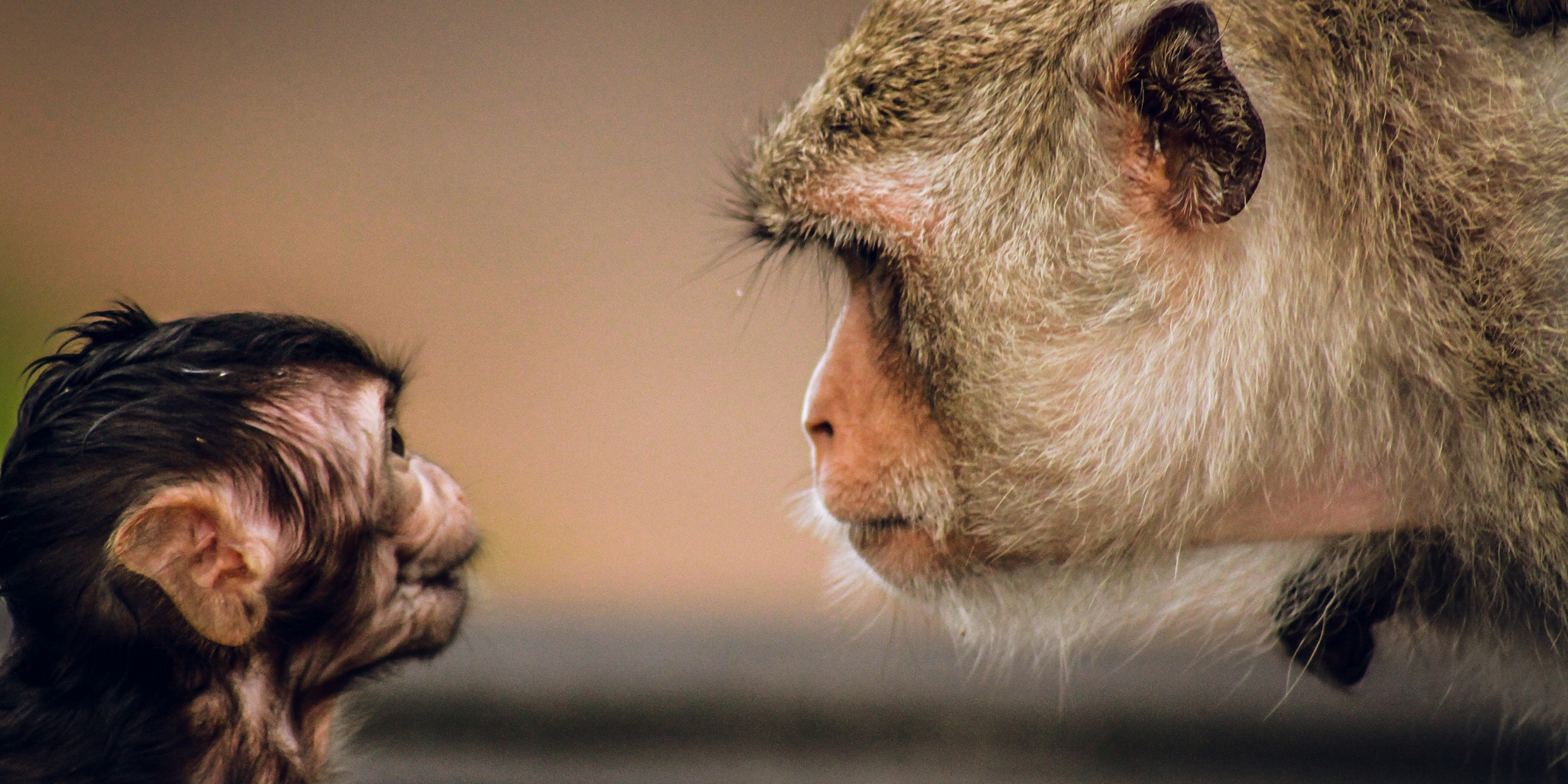Originally published 29 June 1998
Summertime! The season of family reunions. And this year I was fortunate enough to be invited to the first-ever Primate Family get-together, as representative of the Homo sapiens branch of the family.
The turn-out was better than anyone might have expected, with at least one member present from all 250 primate species—our closest cousins on the family tree of life.
There were lorises, pottos, bush babies, lemurs, aye-ayes, tarsiers, monkeys, and apes. The latter category, of course, included myself, as my name tag made clear.
I took my wife along, and we were a source of great merriment as the only folks at the gathering who consistently walked erect and lacked a full covering of body hair. A couple of white-cheeked gibbons asked me to remove my shoes and socks so they could see my non-opposable big toe. Their impolite hoots of derision caused quite a sensation.
Early in the afternoon we fell in with a nice chimpanzee couple from Cameroon, our nearest relations at the party. To tell the truth, we did not have as much in common as you’d might expect, considering that we share 98.4 percent of our genes.
The chimps showed great interest in photographs of our children and grandchildren, but annoyed my wife by nibbling the photos around the edges. My wife was also rather put off by the heaping plate of termite grubs that the male chimp insisted on sharing.
I must say, though, that we found the chimps’ company more congenial than that of mandrill couple who roamed the reunion looking for others from Cameroon. They crashed our table and started making an awful racket, flashing their colorful body parts and otherwise being offensive.
I mean, we’re talking brain weight here. The mandrills were nearly as big as our chimpanzee friends — and proved it by jumping up and down on the table — but behind their plug-ugly baboon snouts were brains not half the size of a chimp’s.
Of course, our human brains are three times bigger than the brains of chimpanzees, but we discreetly left that fact unsaid.
Eventually, we excused ourselves from the chimps’ table and mingled with the crowd, determined to make acquaintance of all our relations.
As carnivores, we made our way to the barbecue area, but found it rather sparsely populated. An owl-faced monkey and its mate were happily sinking their teeth into roasted rodents. I complimented the male monkey on his handsome white nose stripe and earned an ear-rattling roar for my trouble. So much for trying to be polite.
The veggie buffet, on the other hand, with its heaping bowls of leaves, bark, fruits, nuts, and seeds, was packed with takers, as was the insect buffet. A red-faced bald uacari dashed back and forth between the two tables, wolfing down alternate handfuls of seeds and ants.
A pygmy mouse lemur from Madagascar, the smallest primate at the reunion, had seated itself in a large bowl of berry snacks, to the embarrassed consternation of its more discreet lemur cousins. It would have made a nice snack for some larger opportunistic carnivore had my wife not plucked it from the bowl and kept it curled in the palm of her hand.
As the afternoon wore on and more beer was consumed, things started getting rather out-of-hand. There was lots of indiscriminate heinie-flashing by female baboons. Male vervets, drills, and red-shanked douc langurs got into an indelicate competition concerning who had the most colorful — ah, parts. I mean, I’ve been to some rowdy office parties, but this took the cake.
I will admit that the glorious bushy posterior appendages of the ring-tailed lemur and her mate made me a little jealous that my wife and I were among the few dozen folks at the party without tails; only apes lacked this adornment.
It was particularly gratifying to observe the presence at the reunion of a hairy-eared dwarf lemur from Madagascar and a tonkin snub-nosed monkey from Vietnam, both of whom represented wild populations whose total numbers are in the dozens. Another half-dozen of the gang are on also the “critically endangered” list, but they put up a good front, knocking back brewskies with the rest of us.
Toward the end of the day, a call went out for everyone who qualified as a “critically endangered” or “endangered” species to gather at the volleyball court for a group photo. I was astonished when nearly half of the species at the reunion answered the call. Every lemur was there, as were our closest relatives — the orangutans, gorillas, and chimpanzees.
My wife and I faded rather sheepishly into the background, knowing that it was the phenomenal success of our own species that tipped the scales so precariously against so many of our cousins. As the camera snapped we decided it was time to take our leave, wondering how many of the species in the photograph would be with us at the next primate family reunion in ten years time.



